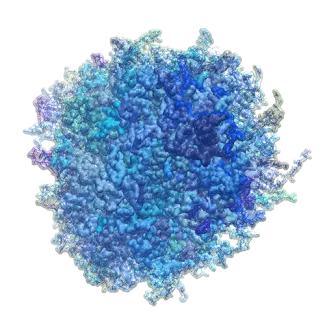Biomolecules at high concentrations may phase separate into condensates that are highly enriched in specific proteins or nucleic acids. Most interesting in the biological context is liquid-liquid phase separation, where condensates retain liquid-like dynamics.
We are interested in the following specific topics:
- Condensate formation with peptides, folded proteins and RNA
- Electrostatics as a driving force for condensation
- Internal condensate structure and dynamics
- Client-condensate interactions
- Altered biomolecular behavior inside condensates
- Effects of shear flow on condensate morphology
We study condensates via coarse-grained and atomistic simulations. The residue-level model COCOMO was specifically developed by us to study condensate formation.
Software and modeling resources:
- COCOMO: residue-level coarse-grained model for proteins and RNA
- phasesep: prediction of phase separation between globular proteins and RNA based on size and charge
- peprnallps: prediction of phase separation between peptides and RNA polymers as a function of polymer length






